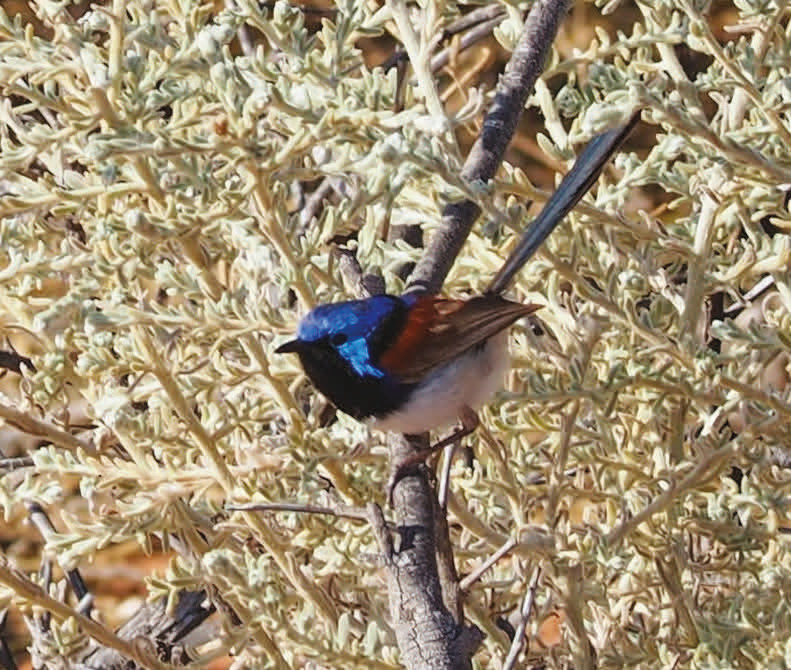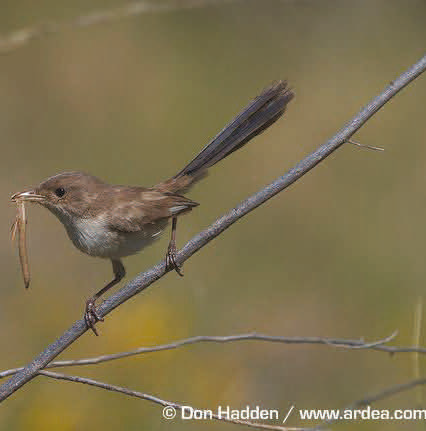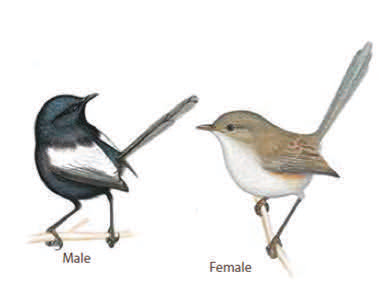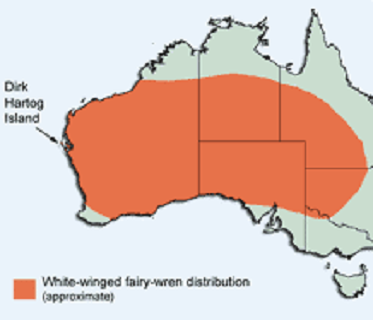Shark Bay Variegated Fairy-Wren
Variegated fairy-wren
Malurus lamberti bernieri
Description

| Head-body 65mm |
Tail 65mm |
Weight 6-11g |
A flash of blue and a squeaky reeling call signals the presence of a variegated fairy-wren. Female and young birds are mostly grey-brown on top, creamcoloured below, and have a chestnut ring around the eye. The male has an electric blue head, chestnut shoulders and a bright blue tail. The Shark Bay subspecies differs from the mainland species (Malurus lamberti) by having a much darker cap and cobalt blue earmuffs.
Diet and habitat

Variegated fairy-wrens are usually seen in pairs or small family groups flitting about catching insects. They also eat spiders, seeds and leaves.
Breeding

| Incubation 13 days |
No. eggs 2-4 |
Fledge 2 weeks |
These fairy-wrens usually breed from July to September but may breed during other months when insects are plentiful after good rain. Their nests are dome shaped and hidden in shrubbery close to the ground. While the breeding female incubates the eggs and looks after the chicks others in her group gather food.
Distribution

The Shark Bay subspecies, Malurus lamberti bernieri, is found only on Dirk Hartog Island in Shark Bay. The mainland species occurs in a broad band across most arid and semi-arid parts of Australia.
Distribution

Threats to fairy-wrens include habitat loss and degradation, and predation by introduced mammals.
Fact sheet
SHARK BAY
World Heritage



